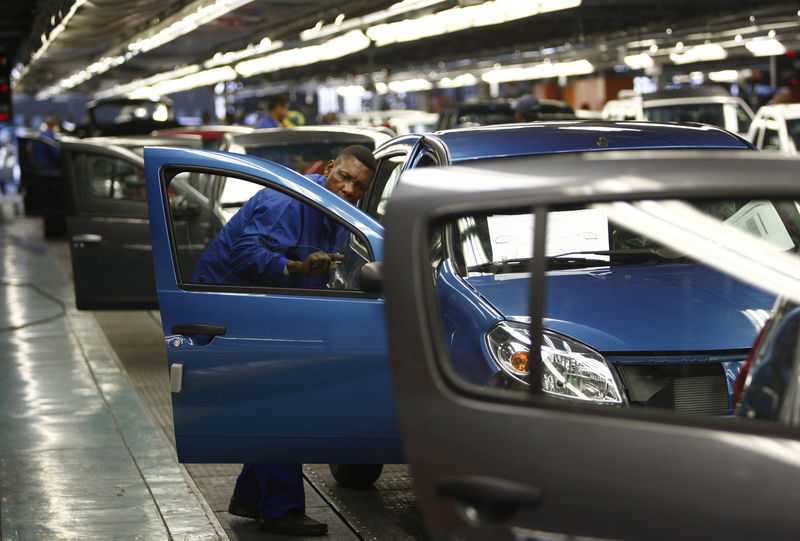
Loadshedding Leaves South African Economy Deep in the Red
South Africa’s economy saw its sharpest contraction in a decade in the first quarter of 2019 as the dreaded power cuts – nicknamed loadshedding locally – hurt key sectors like manufacturing and mining, another sign that President Cyril Ramaphosa’s growth drive is struggling to gain traction. Data on Tuesday showed the economy was 3.2% smaller […]

South Africa’s economy saw its sharpest contraction in a decade in the first quarter of 2019 as the dreaded power cuts – nicknamed loadshedding locally – hurt key sectors like manufacturing and mining, another sign that President Cyril Ramaphosa’s growth drive is struggling to gain traction.

REUTERS/Siphiwe Sibeko
Data on Tuesday showed the economy was 3.2% smaller in January-March than in the previous three months. The dismal reading lagged the 1.7% decline economists had expected and sent the rand sharply lower.
“This was the largest economic contraction in almost a decade. … It was largely driven by manufacturing, then mining,” Statistician General Risenga Maluleke told a news conference.
Year-on-year growth in the first quarter was zero compared with forecasts for growth of 0.7%, the statistics office said.
Investor confidence in South Africa remains fragile, despite Ramaphosa’s pledges to woo investment, create jobs and root out rampant corruption after his African National Congress (ANC) party won re-election last month.
He faces formidable obstacles, including factional fighting within the ANC, weak consumer demand and ailing state firms like power utility Eskom, which was forced by capacity constraints to impose blackouts early this year.
Although Moody’s still has South Africa’s credit rating at Baa3, the lowest rung of investment grade, economists fear the power crisis will ultimately cost the country that rating and lead to outflows of billions of dollars.
Fixing the problems at Eskom and another loss-making state-owned firm, South African Airways (SAA), is seen as critical to shoring up confidence among the investors South Africa relies upon to finance its big budget and current account deficits.
“The South African economy is not doing well, there are all these false starts where we think the economy is just about to re-accelerate and then it drops back again,” said Cristian Maggio, head of emerging markets strategy at TD Securities.
“The government really has very little time to start doing what it has to do.”
Statistician Maluleke said load-shedding had contributed to the economy’s decline in the first quarter.
Tuesday’s data showed mining output dropped 10.8% in the first quarter from October-December. Manufacturing output fell 8.8%, agriculture dropped 13.2% and construction declined 2.2%.
But output edged up 1.1% in the finance sector.
A recent Reuters poll forecast the South African economy would expand by around 1% in 2019 as a whole, compared with growth of 0.8% last year, although analysts are likely to revise that view in light of the new data.
Even that level of growth would be insufficient to make a meaningful dent in poverty and unemployment or reduce severe inequality, which persists in South Africa more than two decades after the end of white minority rule.
The rand fell more than 1% after the GDP data to trade at 14.6450 versus the U.S. dollar at 1043 GMT. Government bonds weakened slightly, with the yield on the benchmark 2026 bond edging up 2 basis points on the day.
(Additional reporting by Karin Strohecker in London; Writing by Alexander Winning; Editing by Catherine Evans)
